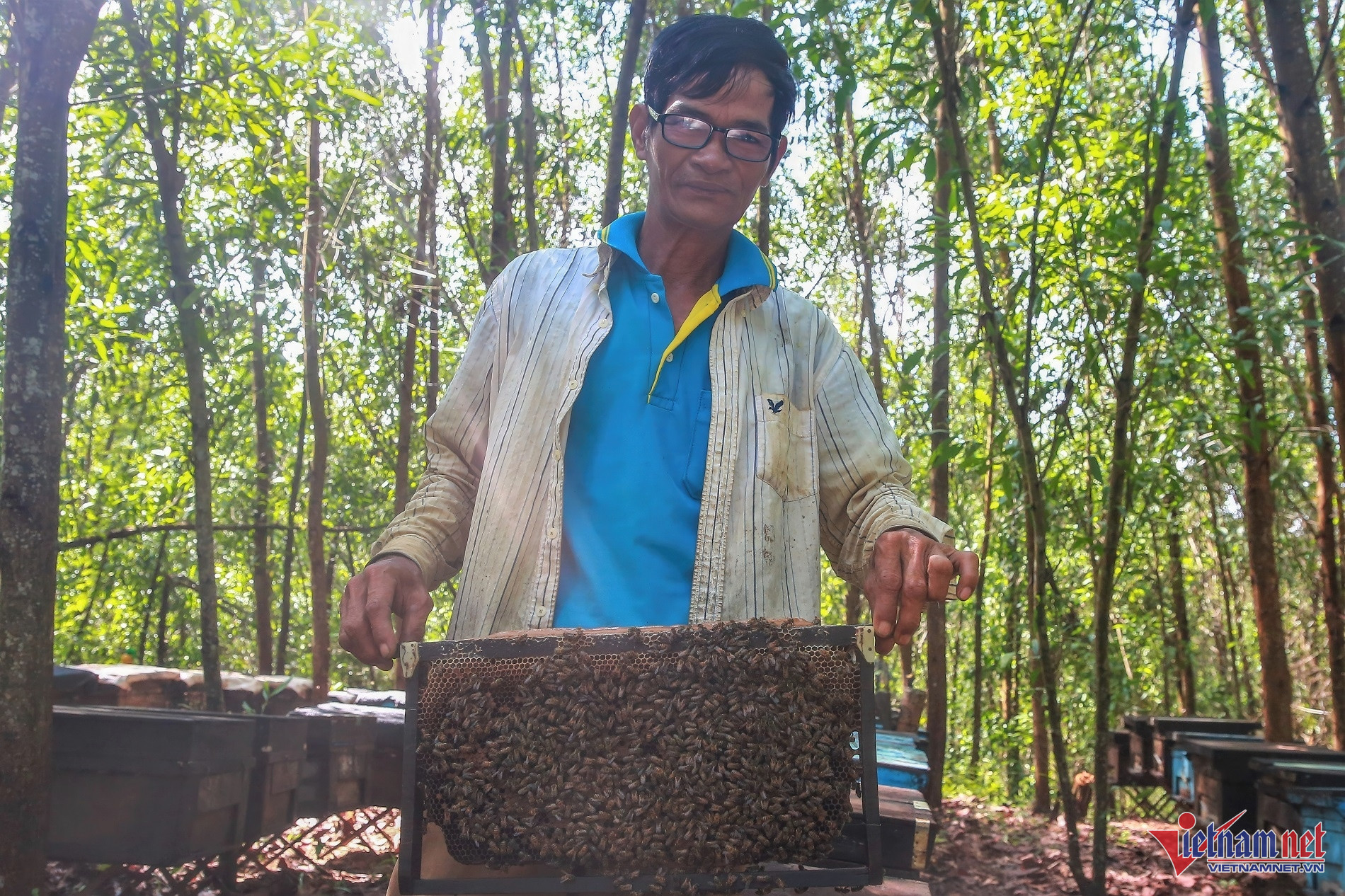
In late September, the hot weather in the central region began cooling down. Under the canopy of the acacia forest in in Phu Ninh district in Quang Nam province, Tran from Krong Nang Town in Dak Lak province was seen busy producing the last batch of honey before leaving with his bee to a new land.
The farmer calls himself nomadic. Every year, when the flower season comes, he bringing his hundreds of bee colonies to Dak Lak, Gia Lai and Quang Nam.
“Every year, I bring 200-500 bee colonies around the three provinces when the seasons of coffee, acacia and rubber blossoming come. If bees don’t travel with blossoming seasons and they have to stay in the same place, they will die of hunger, or leave their hives,” he said.
Farmers like Hai know by heart the flower season that helps create high-quality honey, the land needed for the bees, and the kind of weather and geographical conditions.
From February to April, he brings bees to coffee gardens in Dak Lak to seek flower nectar. From May to October is the time of acacia honey in Quang Nam, while the next. months are the time for rubber honey in Gia Lai.
Hai said the bees he is raising are sourced from Italy. In each barrel, there is always a queen bee (leading bee) whose job is to produce an army of worker bees to find flowers.
A queen bee can live and reproduce for 3-5 years. To expand bee colonies, he has to replace the queen bee once every two years.
The honey harvesting cycle varies depending on the status of bees. “If bees are strong, I can harvest honey after 10 days. However, in some cases, I need to raise bees for 15 days to produce honey,” Hai explained.
The prices of honey vary. On average, bee honey companies collect honey from him for VND20,000-50,000 per kilogram. With 200-500 bee nests, Hai can pocket VND200-500 million after expenses.
Raising bees can bring satisfactory incomes, but this is a risky and hard job. In rainy months, farmers like Hai have to travel between areas where they can find food to feed the bees. The travel may cause bee loss, and there is a risk of bees getting affected by an epidemic.
Ha Nam